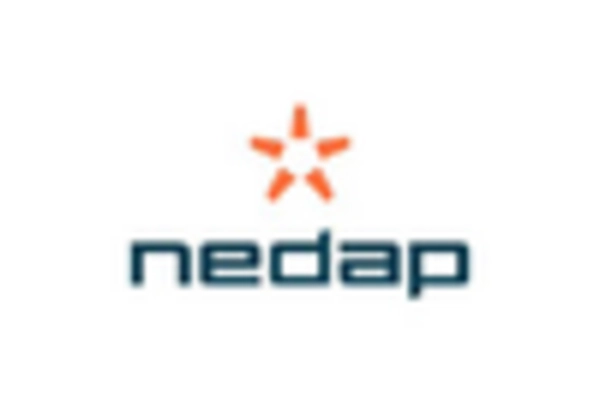Growing E-commerce Sector
The Retail Security Tag Market is also being shaped by the rapid growth of the e-commerce sector. As online shopping continues to expand, retailers are increasingly concerned about the security of their products, both in physical stores and during shipping. The rise in e-commerce has led to a need for effective security measures to prevent theft and ensure product integrity. Retailers are adopting security tags not only for in-store merchandise but also for items sold online. This dual approach to security is likely to drive the demand for innovative tagging solutions within the Retail Security Tag Market, as businesses strive to protect their assets across multiple channels.
Rising Retail Theft Rates
The Retail Security Tag Market is experiencing a surge in demand due to increasing retail theft rates. According to recent statistics, retail theft has escalated, with losses amounting to billions annually. This alarming trend compels retailers to invest in security measures, including security tags, to mitigate losses. The heightened awareness of theft has led to a greater emphasis on loss prevention strategies, driving the adoption of advanced security tagging solutions. Retailers are increasingly recognizing that effective security measures not only protect their assets but also enhance customer trust. As a result, the Retail Security Tag Market is likely to witness substantial growth as businesses prioritize safeguarding their merchandise against theft.
Regulatory Compliance and Standards
The Retail Security Tag Market is influenced by the need for regulatory compliance and adherence to industry standards. Governments and regulatory bodies are increasingly implementing guidelines to ensure the safety and security of retail environments. Compliance with these regulations often necessitates the use of security tags and systems that meet specific standards. Retailers are compelled to invest in security solutions that align with these regulations to avoid penalties and enhance their operational credibility. This trend is likely to propel the growth of the Retail Security Tag Market as businesses prioritize compliance and seek reliable security measures to protect their assets.
Consumer Awareness and Demand for Security
The Retail Security Tag Market is witnessing a shift in consumer awareness regarding security measures in retail environments. As consumers become more informed about the risks of theft and fraud, they are increasingly demanding that retailers implement robust security measures. This heightened awareness is prompting retailers to adopt security tags as a means of ensuring product safety and enhancing customer confidence. The demand for visible security measures is likely to drive the growth of the Retail Security Tag Market, as businesses recognize the importance of addressing consumer concerns and fostering a secure shopping experience.
Technological Advancements in Security Tags
The Retail Security Tag Market is significantly influenced by technological advancements in security tagging solutions. Innovations such as RFID technology and electronic article surveillance (EAS) systems are transforming the landscape of retail security. RFID tags, for instance, offer enhanced tracking capabilities and real-time inventory management, which are becoming essential for retailers. The integration of these technologies not only improves security but also streamlines operations, thereby increasing efficiency. As retailers seek to modernize their security measures, the demand for sophisticated security tags is expected to rise. This trend indicates a shift towards more intelligent and effective security solutions within the Retail Security Tag Market.
















